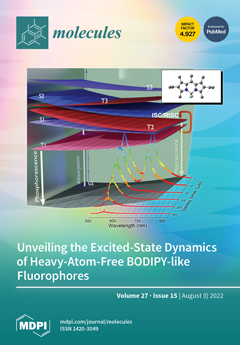The search for new antibiotics against multidrug-resistant (MDR), Gram-negative bacteria is crucial with respect to filling the antibiotics development pipeline, which is subject to a critical shortage of novel molecules. Screening of natural products is a promising approach for identifying antimicrobial compounds hosting a higher degree of novelty. Here, we report the isolation and characterization of four galloylglucoses active against different MDR strains of
Escherichia coli and
Klebsiella pneumoniae. A crude acetone extract was prepared from
Paeonia officinalis Linnaeus leaves, and bioautography-guided isolation of active compounds from the extract was performed by liquid–liquid extraction, as well as open column, flash, and preparative chromatographic methods. Isolated active compounds were characterized and elucidated by a combination of spectroscopic and spectrometric techniques. In vitro antimicrobial susceptibility testing was carried out on
E. coli and
K. pneumoniae using 2 reference strains and 13 strains hosting a wide range of MDR phenotypes. Furthermore, in vivo antibacterial activities were assessed using
Galleria mellonella larvae, and compounds 1,2,3,4,6-penta-O-galloyl-β-
d-glucose, 3-O-digalloyl-1,2,4,6-tetra-O-galloyl-β-
d-glucose, 6-O-digalloyl-1,2,3,4-tetra-O-galloyl-β-
d-glucose, and 3,6-bis-O-digalloyl-1,2,4-tri-O-galloyl-β-
d-glucose were isolated and characterized. They showed minimum inhibitory concentration (MIC) values in the range of 2–256 µg/mL across tested bacterial strains. These findings have added to the number of known galloylglucoses from
P. officinalis and highlight their potential against MDR Gram-negative bacteria.
Full article






